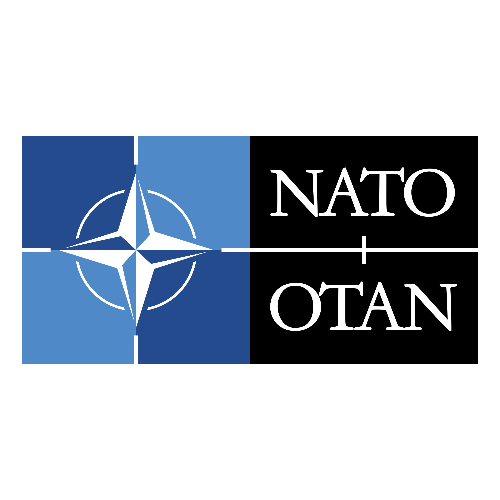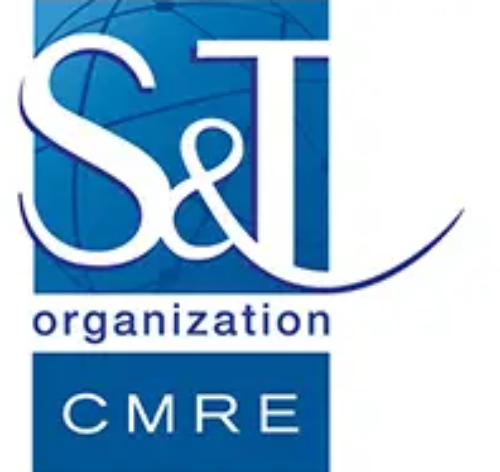Organiser/Co-chairs
Dr. Thuvan Piehler, PhD1,2, ,Dr. Mattias K. Sköld, MD. PhD3,4, Lt(N) Peter Beliveau, DC, MSc5, Dr. Shawn G. Rhind, PhD6, Dr. Oshin Vartanian, PhD6, and MAJ Stephen Krauss, PhD2
- US Medical Research Development and Command, Ft. Detrick, Maryland, USA
- US Army Research Laboratory, Aberdeen Proving Ground, Maryland, USA
- Department of Neuroscience, Experimental Traumatology Unit, Karolinska Institutet, Stockholm, Sweden
- Department of Neurosurgery, Uppsala University Hospital, Uppsala, Sweden
- Canadian Armed Forces, Department of National Defence, Ottawa ON, Canada
- Defence Research and Development Canada, Toronto Research Centre, Toronto ON, Canada


The objectives of the workshop are to discuss a) prospective cross-sectional comparisons and longitudinal data, collected from service members and Veterans who have sustained extensive operational exposures to repetitive sub-concussive neurotrauma (e.g., explosive blast, weapons systems), during rigorous military training exercises and/or operational war-zone deployments vs. healthy cohorts, b) advanced structural and functional neuroimaging techniques to evaluate brain network integrity and functional connectivity; c) wearable concussion dosimeter technologies and gaps in their capability to monitor biological and cognitive performance changes in training and operations; d) multinational guidelines of blast monitoring implementation to mitigate blast exposure risk to Warfighters; e) blast-specific medical intervention, and f) future research direction to assist policy makers and researchers to further develop the field of blast-induced TBI as efficiently and effectively as possible.
16:00 – 16:05
Opening Remarks
Co-organisers
16:05 – 16:20
Machine Learning Approach to Identify the Pathobiology of Repeated Exposures to Sub-concussive Level of Primary Explosive Blast
Denes V. Agoston M.D., Ph.D., Professor of Neuroscience, Department of Anatomy, Physiology and Genetics, School of Medicine, USU, USA
Abstract
D. V. Agoston1, J. McCullough1, R. Aniceto1, I-H. Lin1, M. Eklund1, C. Kwak1, A. Kamnaksh1, C. Dunbar2,4, J. Engall2,4, E. B. Schneider4, F. Leonessa4, and J. L. Duckworth2,4
1Department of Anatomy, Physiology and Genetics, Uniformed Services University, Bethesda, MD, USA, 2Neurotactical Research Team, Marine Corps Base Camp Pendleton, CA, USA and 3Department of Neurology, Uniformed Services University, Bethesda, MD, U.S.A.
The widespread use of powerful, high-energy explosives during military conflicts and military training exercises causes a unique form of injury called blast induced neurotrauma (BINT) [1]. Primary BINT caused by exposure to the blast wave itself can cause endothelial stress / injury triggering complex downstream biological responses, vascular remodeling and neuroinflammation that may lead to chronic neurological and neuropsychiatric conditions.
The most frequent form of primary BINT is mild/sub-concussive but repeated sub-concussive blast exposure, (RSCBE) associated with heavy weapons training (HWT) and breaching exercises can induce long-term neuropsychological problems, however the pathobiology is currently unknown. In order to identify the molecular changes in response to RSCBE, we have analyzed blood samples collected at various post exposure time points for changes in protein biomarker levels of GFAP, IL-1B, IL-6, NFL, pTau, S100B, Tau, UCHL1, vWF, CHRNA7, CLDN5, IFNg, MMP9, OCL, TNFa, VEGFa, AQP4, HMGB1, HSP70, VCAM representing markers of neuro-, glia, axon, vascular/endothelial injuries, and inflammation [2]. We then have utilized a supervised decision tree machine learning algorithm to determine a combination of time point and biomarker rules that best separates out the various exposure groups. The training data set was used to train the model, which we then tested on the test data set using R programming language. We have generated decision trees PER post-injury timepoints that have shown a) time dependent evolution of the pathobiological responses to RSCBE b) led by vascular / endothelial injury and stress and inflammatory processes and c) indications that the pathobiological responses are “dose-dependent”.
Combined with functional outcome measures, frequency and amplitude of blast exposures, the biomarker data will enable to develop an algorithm aimed to optimize training protocols and to maintain and improve force readiness and to mitigate potential long-term adverse outcomes.
1. Cernak, I., Understanding blast-induced neurotrauma: how far have we come? Concussion, 2017. 2(3): p. Cnc42.
2. Agoston, D.V. and M. Elsayed, Serum-Based Protein Biomarkers in Blast-Induced Traumatic Brain Injury Spectrum Disorder. Front Neurol, 2012. 3: p. 107.
16:20 – 16:35
Acute and Chronic Effects of Blast Exposure on the Hearing Performance of Military Personnel
Douglas S. Brungart, PhD, Chief Scientist, National Military Audiology and Speech Center, Walter Reed National Military Medical Center, USA
Abstract
Douglas S. Brungart, Walter Reed National Military Medical Center
Devon Kulinsky, Walter Reed National Military Medical Center
Chris Smalt, MIT Lincoln Laboratories
Many individuals who are subjected to high-level impulse noise and blast report that they experience tinnitus and other hearing symptoms in the acute post-exposure period, and repeated exposure to blast and impulse noise is known to result and chronic tinnitus and permanent hearing loss. Here we describe a number of studies that have attempted to characterize the effects that blast has on hearing both on the acute symptoms experienced immediately post exposure and on the long-term symptoms of those who are repeatedly exposed to low-level blast. The results show that temporary changes in hearing thresholds frequently occur in impulse noise exposures that exceed 100 dB LAeq8h, and that these temporary changes in hearing are associated with post-exposure symptoms like muffled hearing and tinnitus. Data are also presented from another set of studies that show that individuals with a history of post-exposure changes in hearing and some history of blast exposure have greater hearing difficulties than non-blast exposed individuals, even when they have similar audiometric thresholds. The results of these studies indicate that blast exposures that result in frequent, noticeable changes in hearing have negative long-term consequences even when they do not result in the permanent threshold shifts typically associated with noise-related hearing loss. [The views expressed in this presentation are those of the author and do not reflect the official policy of the Department of Army/Navy/Air Force, Department of Defense, or U.S. Government.]
16:35 – 16:50
Validating Damage Risk Criteria for Blast Exposure Using a Noise Dose Escalation Approach
Dr. Heath Jones, PhD, Warfighter Performance Group, U.S. Army Aeromedical Research Laboratory, USA.
Abstract
Exposure to blast noise from small arms can cause both temporary and permanent hearing loss. Damage-risk criteria (DRC) are algorithms used to estimate the risk posed by an exposure and are used to identify minimum requirements for hearing protectors, training and doctrine, and the identification of Service Members requiring return-to-duty assessments. Unfortunately, the Department of Defense (DoD) does not currently have a medical standard for assessing hearing damage risk from blast injury. Numerous damage DRCs for impulse noise are currently available; however, the allowable number of rounds (ANOR) for a given exposure varies widely across the different DRCs, indicating a lack of clarity regarding the injury risk from small arms impulsive noise. Given this, the currently available auditory injury models cannot be included in joint DoD medical protection and performance criteria for blast safety exposure standards, without prospective or comparative validation. The current presentation discusses a proposed study to determine the candidate DRC that returns the maximum safe ANOR in quasi-free field and reverberant environments. This study resolves the discrepancy by identifying the maximum tolerable dose (MTD) for impulse noises produced by small arms using a ‘dose-escalation’ approach akin to Phase 1 clinical drug trials. Human research volunteers (HRVs) will be exposed to increasing numbers of impulsive stimuli. An exposure providing less than 95% certainty of avoiding a temporary threshold shift (TTS) of ≥ 25 decibels at any stimulus frequency from 0.5 – 8 kilohertz is considered unsafe. The sound levels presented to HRVs will be chosen to exploit differences across DRCs and allow recommendation of the DRC with the ANOR that returns the maximum safe unprotected exposure for various exposure environments. In addition to identifying MTDs for small-arm impulses, correlates of temporary threshold shift (TTS), and relative probabilities of changes across measures (e.g., TTS, tinnitus, neurocognitive variables, vestibular symptoms, potential indicators of cochlear synaptopathy) will be assessed to provide insights into brain health risk associated with repetitive small arm exposure. The proposed study will also provide detailed records of exposures and responses will also be retained to support comparisons with future DRCs.
16:50 – 17:20
NATO Human Factors and Medicine Research Task Group 338: Guidelines to Mitigate Military Occupational Brain Health Risks from Repetitive Blast Exposure
Tim Westerhof, MSc, Scientist Biomechanics, Department of Personal Protection and Explosives Safety, TNO, NLD
Matthew B. Panzer, PhD, Associate Professor of Biomedical Engineering, Center for Applied Biomechanics, University of Virginia, USA
Abstract
Blast TBI is an increasingly recognized injury risk for soldiers. Awareness of the risk of exposure to blast overpressure has increased due to current training tactics, missions, and operations. In addition, there is a growing body of evidence that cumulative blast exposure is a significant risk factor for developing negative long-term brain health effects. To reduce the risk of developing negative brain health effects from blast overpressure, soldiers can benefit significantly from the implementation of exposure guidelines to better control the exposure to blast causing activities through military careers. Such guidelines should ideally be constructed to assist in understanding and mitigating the blast exposure in everyday military activities in both training and operations.
The NATO Human Factors and Medicine (HFM) Research Task Group (RTG) 338 is a multidisciplinary team consisting of subject-matter experts from nine countries with expertise in biomedical, biophysical, and operational aspects of blast exposure. The aim for HFM-338 was to identify the best practices as well as produce knowledge to control and minimize the risk for developing adverse brain health effects from repetitive blast exposure. This was done through the development of three products 1) Blast overpressure exposure guidelines that may be used to mitigate adverse brain health effects; 2) Operational guidelines that detail the development of a blast overpressure monitoring program; and 3) Research and development guidelines that identify critical research gaps which will build upon the knowledge within this field to better monitor and understand warfighter brain health. The guidelines include topics such as blast exposure monitoring, capturing of health and performance data in blast overpressure exposure, assessment and analysis of blast overpressure exposure, health and performance effects, mitigation strategies in blast overpressure exposure, medical intervention strategies, and guidelines related to research that will enhance the above capabilities.
